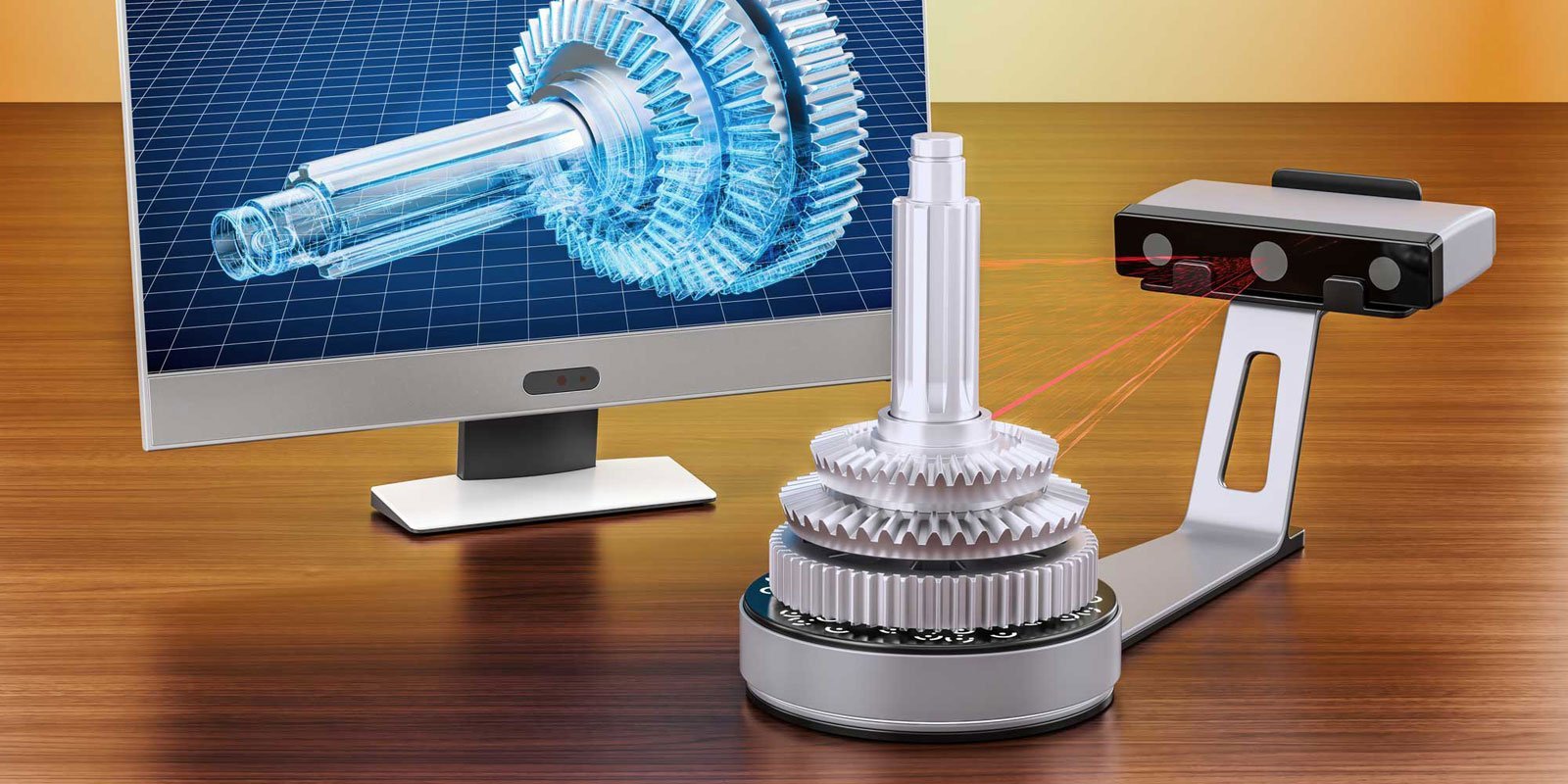Navigating the World of 3D Scanners: What Are They Used For?
Introduction
Welcome to the exciting and transformative world of 3D scanning. A technology that has significantly impacted various sectors ranging from entertainment to healthcare, 3D scanners are vital tools in the modern world. This comprehensive article delves into the basics of 3D scanners, their many practical applications, the procedure for 3D scanning, and the advantages and challenges associated with this technology. Read on to gain valuable insights into how 3D scanners are shaping current practices and the future of many industries.
What Are 3D Scanners? Understanding The Fundamentals
3D scanners represent a cutting-edge technology designed to capture and record the physical characteristics of any object or environment, including design, composition, texture, and color. This scanned information is subsequently used to construct digital 3D renderings. Although all 3D scanners serve this general purpose, they utilize various techniques to achieve this:
- Laser Pulse-Based Scanners: These rely on harmless laser light to register object data.
- Structured Light Scanners: These operate with structured or patterned light.
- CT Scanning: These apply computed tomography to create 3D images.
- Photogrammetry Techniques: These use photos from different angles to extract positional data.
With constant innovations, 3D scanning technology is amplifying its precision, efficiency, and applications, heralding a significant transformation in numerous sectors.
What Are the Common Uses of 3D Scanners?
3D scanners have carved their unique space across multiple industries owing to their versatility and efficiency. The functional scope of these scanners spans medical service, industrial design, manufacturing, forensics, and more. Let's delve deeper into some of these key sectors:
Utilization of 3D Scanners in Health and Dental Sectors
In these critical sectors, 3D scanners prove to be a crucial asset. They are employed to:
- Design custom prosthetics and orthotics with perfect fit and comfort.
- Create dental molds for personalized treatment and devices like braces or dental implants.
- Pre-op planning and practicing surgeries via 3D printed models, thereby reducing procedure time.
Applying 3D Scanners in Industrial Design and Manufacturing
3D Scanning has greatly influenced industrial design and manufacturing processes:
- Ensures precision in quality control by performing detailed inspections of parts and assemblies.
- Allows reverse engineering of complex parts. According to market forecasts, the global market for reverse engineering hardware and services is expected to reach $6.5 billion by 2025.
- Speeds up the prototype design process and streamlines product development.
The Role of 3D Scanners in Forensics and Crime Scene Investigation
3D scanners also play a pivotal role in crime scene investigations and forensic science:
- Helps in recreating accident or crime scenes in a 3D virtual environment.
- Assists in bullet trajectory analysis in forensic investigations.
- Provides detailed 3D facial reconstruction from skeletal remains, paving a revolutionary path in identifying unmarked remains.
The remarkable applications of 3D scanners are not just confined to these industries. With continuous advancements, we can anticipate their ever-expanding role in various sectors.

How Does A 3D Scanning Procedure Work?
3D scanning may seem complex, but it can be broken down into manageable stages. Below are the step-by-step procedures usually involved in 3D scanning:
1. Data Collection: At the heart of the procedure, the 3D scanner emits laser light or structured light signals onto the object it's capturing. This light, when returned to the scanner, contains critical information about the object’s shape and appearance.
2. Measurement: Sensors within the 3D scanner are utilized to measure the duration of light travel. The reflected light from the object back to the scanner is constantly met with sensors. The time it takes for the sensor to receive the reflected light allows the scanner to capture every minute detail and dimensions of the object.
3. Creation of Point Clouds: The raw data captured takes the form of point clouds, illustrating thousands or even millions of points on an object's surface. Point clouds are essentially a large set of data points obtained where the laser light has contacted the surface of the object.
4. Conversion into 3D Models: Lastly, these point clouds are transformed into 3D digital models using specialized software. These digital models can then be manipulated, modified, and used in various ways according to the project's requirements.
It’s important to note that the process’s duration varies. Factors such as the size and complexity of the object and the scanner's efficiency play a significant role in determining the time taken for a complete scan. One could argue that, generally, the scanning process can range from a few seconds for a small and simple object, up to several hours for a larger, more complex one.
What Are the Benefits and Challenges of 3D Scanning?
3D scanning technology undeniably offers numerous advantages, but it too comes with its set of challenges. Here's an in-depth look at both.
Advantages of 3D Scanning
1. Precision: The use of digital scanning ensures high accuracy in measurements with minute details accounted for, reducing the chances of errors significantly.
2. Time-Efficient: By digitizing the scanning process, the time taken for manual measurements reduces dramatically, leading to remarkable overall efficiency.
3. Versatility: 3D scanners can be utilized in a plethora of industries, ranging from medical to manufacturing, and crime scene investigations to entertainment, thus demonstrating their versatility.
Disadvantages of 3D Scanning
1. Cost Factors: Despite their benefits, 3D scanners can be costly, making it a hefty investment for small businesses and individuals.
2. Skill Requirement: Operating a 3D scanner requires specialized know-how. The requirement of trained professionals adds an extra dimension to its cost implication and accessibility.
3. Limitations: Despite their precision, 3D scanners sometimes face challenges when attempting to capture intricate geometries or large environments.
While the advantages make a strong case for the use of 3D scanners, the complexities and challenges cannot be overlooked. With continuous advancements and innovations, the tech industry is consistently striving to make the technology more affordable and user-friendly.
Are 3D Scanners Influencing Future Technological Developments?
There's no doubt that 3D scanners are playing a crucial role in driving future technological breakthroughs. Here’s how:
- AI and Machine Learning Enhancement: As these technologies evolve, they are anticipated to be integrated into 3D scanning processes. This marriage will lead to more intelligent data interpretation, significantly improving the efficiency and accuracy of 3D models.

- Advancements in AR and VR Technologies: The surge in popularity of Augmented Reality and Virtual Reality, when paired with 3D scanning, promises an immersive experiences like never before. This combination is expected to revolutionize a variety of sectors, from gaming and entertainment to remote work and collaboration.
The influence of 3D scanners on the future continues to broaden. It’s clear that as technology develops, the potential and applications of 3D scanners will only increase.
Conclusion
Navigating the world of 3D scanners reveals their myriad applications and the immense potential they hold for our future. From healthcare and manufacturing to forensics and entertainment, these devices are paving the way for advancements across sectors. As 3D scanning technology continues to evolve, we can anticipate far-reaching impacts on how we design, produce, inspect, and experience objects in the digital and physical world.
Related FAQs about what are 3d scanners used for
What Industries Benefit Most from 3D Scanning?
Many industries benefit from 3D scanning, but it is particularly influential in healthcare, manufacturing, archaeology, and forensics. From designing prosthetics to reverse engineering complex parts to crime scene reconstruction, 3D scanning plays a crucial role.
How Accurate are 3D Scanners?
3D scanners offer remarkable accuracy, capturing minute details of an object's shape and appearance. While accuracy levels can vary based on the specific model and application, scans are typically within a few millimeters of the actual object.
Can 3D Scanners be used for Personal Projects, and If So, How?
Yes, 3D scanners can be used for personal projects. They help in creating digital replicas of objects, designing custom parts, inspecting artifacts, and much more. The possibilities are endless and depend on individual creativity and the specific scanner capabilities.


